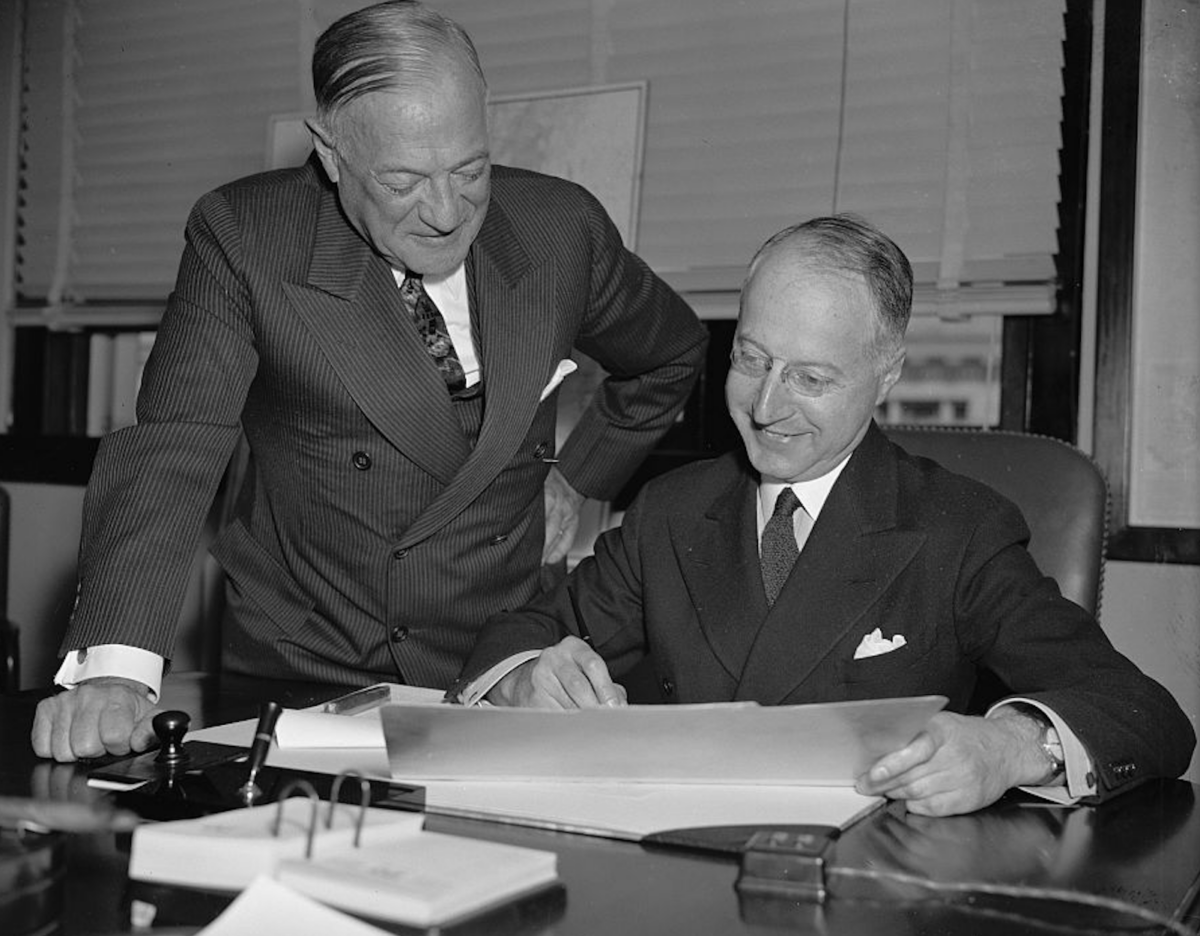As news surrounding the tragic Titan submersible continues to mount, The New York Times was the first to report the macabre connection between Stockton Rush — the OceanGate chief executive piloting the submersible — and the very shipwreck he aimed to see.
In an ironic twist of historical fate, Rush was married to Wendy Rush — the great-great-granddaughter of retailing magnate Isidor Straus and his wife, Ida, who were among those to perish in the icy waters of the Atlantic in 1912.
Wendy Rush, who serves as OceanGate’s communications director, has been involved with its Titanic expeditions since they began in 2021, according to NPR.
Co-owner of Macy’s department store at the time of his death, Isidor and Ida perhaps best known for their tragic love story:
“Survivors of the disaster recalled seeing Isidor Straus refuse a seat on a lifeboat when women and children were still waiting to flee the sinking liner. Ida Straus, his wife of four decades, declared that she would not leave her husband, and the two were seen standing arm in arm on the Titanic’s deck as the ship went down,” writes Anushka Patil for The New York Times.
Rush’s great-great grandfather’s body was recovered at sea some two weeks after the tragedy — a locket with photographs of his children still in his pocket. Ida was never found.
Unfortunately, the Rush family connections tied them together with another great tragedy of the 20th century — the Holocaust.
In the past decade, archivists have uncovered the connection between Nathan Straus Jr. — the son of the founder of Macy’s department stores — and Otto Frank.
According to the U.S. Holocaust Memorial Museum, the pair met 30 years prior to the outbreak of World War II while Frank was at university in Heidelberg, Germany.
The two men become fast friends — even vacationing with their families in Switzerland in 1928 — and remained close enough for Frank to reach out to Straus as Europe descended under the dark veil of the Nazi regime.
“I am forced to look out for emigration and as far as I can see U.S.A. is the only country we could go to . . .,” Frank wrote to Straus on April 30, 1941. “You are the only person I know that I can ask: Would it be possible for you to give a deposit in my favor?”
Within six weeks, Straus esponded with five signed copies of an affidavit, pledging $5,000 to sponsor the Frank family’s immigration.
From April to December 1941, letters, telegrams and government papers document the men’s efforts to save the family despite rapidly changing immigration law.
Only five days after Frank first wrote to Straus, the U.S. State Department had implemented new rules, which mandated that all immigration applications were to be approved in Washington, D.C.
This policy would delay the Frank family’s immigration for at least several months, according to the U.S. Holocaust Memorial Museum.
“Newspapers announced worse news that same day: Germany had ordered US consulates in Nazi-occupied territory to close,” the museum continued. “On July 10, State Department officials in Rotterdam reported to Washington that they had destroyed their visa stamps and closed the consulate. Frank had not finished collecting the necessary paperwork before the consulate closed. Even if he managed to gather everything, the Franks would have had to travel through multiple Nazi-occupied countries to reach a US consulate for an interview.”
In response to the changing landscape, Frank stoically wrote to Straus, “It is a pity that for the present all efforts will be useless as the American Consulate at Rotterdam is leaving . . . So we have to wait. Bad luck, but cannot be helped. Let us hope that conditions will get more normal again.”
In one last-ditch effort to escape the Netherlands, Frank wrote to Straus on Sept. 8, 1941, raising the possibility of obtaining a tourist visa to Cuba. Despite the Cuban consulate being closed in the Netherlands, there was a chance for a Cuban visa by way of Spain or Germany — if he could get there.
The visa fee and the bank deposit would require at least $2,825 (approximately 59,465 in 2023).
“It is for the sake of the children mainly that we have to care for. Our own fate is of less importance,” Frank wrote to Straus. “You are the only person I know that I can ask.”
Straus immediately pledged the money, but ultimately it was for naught.
Despite Cuba issuing Frank a visa on Dec. 1, 1941, the events of Pearl Harbor and Germany’s declaration of war on the U.S. caused the visa to be canceled just 10 days later.
Less than a year later, on July 6, 1942, the Frank family, along with Herman and Auguste Van Pels, their son Peter, and later, Fritz Pfeffer, went into hiding in the attic annex above the Opekta offices.
Tragically, on Aug. 4, 1944, Dutch police discovered and arrested the residents hiding in the annex.
By the war’s end, Frank was the only surviving member of those hiding in the attic. According to the U.S. Holocaust Memorial Museum, his wife Edith was murdered in Auschwitz-Birkenau, and his daughters Margot and Anne died of typhus in the Bergen-Belsen concentration camp in early spring 1945.
The Straus-Frank friendship endured, however. Reconnecting in September 1945, Straus, through his connections, was able to help get Anne Frank’s diary published in 1952 — even writing to Eleanor Roosevelt to write the forward.
historynet magazines
Our 9 best-selling history titles feature in-depth storytelling and iconic imagery to engage and inform on the people, the wars, and the events that shaped America and the world.






